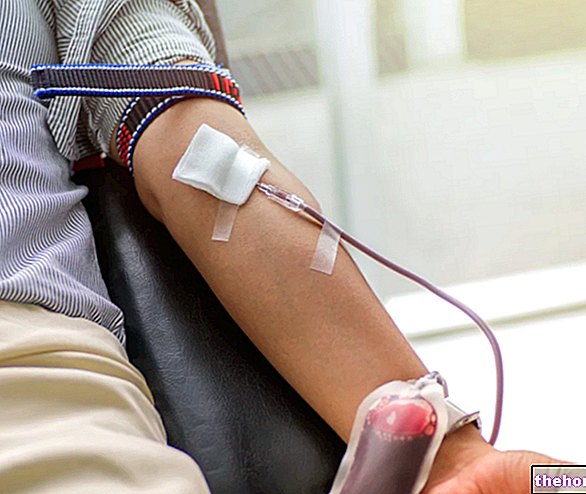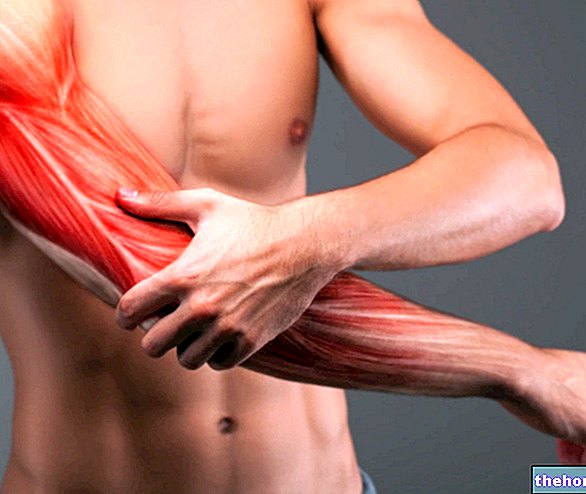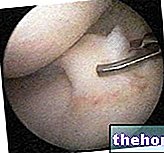Edited by Dr. Antonio Romano
The causes of spinal pain are numerous. Some studies have shown that only 20% of back pain is caused by a specific problem of the spinal column (spinal pathologies); the remaining 80% is caused by non-specific causes such as incorrect postures and movements, psychological stress, poor physical fitness and excess body weight.
There are two types of back pain: acute low back pain and chronic low back pain. Acute low back pain is characterized by a type of pain, caused by a muscle, ligament, joint and disc injury, which is accompanied by inflammatory phenomena. Inflammation and pain are part of the healing process and therefore cease after healing is complete in a maximum of 30 days.
Acute pain in the spine is, therefore, an "alarm signal for" an injury, a defense reaction, a stimulus to change position; it has a protective and adaptive role, it serves to prevent movements that can further damage the spine.
The key to passing between acute and chronic back pain are secondary factors, factors that maintain pain even in the face of total healing of the injured spine structures. These factors are called chronic risk factors and are both physical and, above all, psychic and social. Hence the definition of bio-psycho-social syndrome.
Physical risk factors are previous low back pain, long duration of symptoms, extensive pain, pain radiating to the lower limbs, limitation of joint mobility, incorrect ergonomic management of the body, low level of physical activity, overweight, smoking and other disorders of the musculoskeletal system. Psychic risk factors are stress, poor personal care, self-assessment of poor health, depression. Finally, the social risk factors are professional dissatisfaction, social unease , the indemnity syndrome.
Chronic low back pain, therefore, tends to make the pain persist beyond 3 months even in the face of a non-existent lesion. Chronic pain does not have a protective function, it becomes autonomous, harmful, reduces the functionality of the spine and promotes disability.
Goals: recovery of low back pain
- Treat pain with means that reduce bed rest and drug addiction;
- Improve vertebral function and re-educate posture;
- Teaching correct vertebral ergonomics in daily life and at work;
- Teach the patient the self-management of chronic manifestations and instill confidence in their own physical abilities;
- Quick return to normal work and home activities.
Acute low back pain (about 7 days)
Treatment in the acute phase is mainly based on physiotherapy and kinesitherapy, minimizing bed rest and the intake of drugs such as analgesics and muscle relaxants.
In this phase it is important to lead the patient to self-manage their body, reducing pain and preventing relapses and chronicity.
Medical gymnastics must be early and go through these steps:
- Relaxation and stretching exercises;
- Postural education exercises.
Here are two fundamental antalgic exercises, i.e. against pain, useful to be performed several times a day for both acute and chronic forms of low back pain:


Fig.1 Pain relief exercises: A, Psoas position; B, position of the Sphinx.
The Psoas position (A): allows relaxation of the Ileo-Psoas muscle by reducing its traction on the lumbar vertebrae.
The position of the Sphinx (B): allows the centralization of pain in case of disc herniation or protrusion.
At the end of the acute phase, therefore at the end of the pain, it is useful to start with the following work protocol:
- Strengthening exercises in isometry, initially in vertebral discharge.
- Lumbosacral stabilization exercises.
- Gentle and progressive mobilization exercises.

Fig. 2 Static or dynamic abdominal strengthening exercise.
The position of the lower limbs facilitates the retroversion of the pelvis.
From a dynamometric study on the function of the abdominal muscles it was found that subjects with chronic back pain show a decrease in strength between 48 and 82% compared to the control group (Smidt et al).
In lumbago subjects, however, the relationship between abdominal and extensor strength (3: 5) is similar to control subjects, their fatigue is still greater (Suzuki and Endo).
These exercises must be performed daily respecting the "no pain" rule for each one.
The period that goes from 7 days to 7 weeks represents a very delicate moment, of transition from the acute phase to the chronic phase, which can be indicated by the name of sub-acute phase.
In case of improvement, a conservative rehabilitation treatment is recommended, comparable to the modalities used in chronic low back pain. In case of worsening, on the other hand, further investigations will be carried out and different therapeutic solutions, possibly surgical, proposed.
Chronic low back pain
Treatment at this stage has the following objectives:
Teach a correct management of the column;
Get good functional training to carry out work and home activities;
Maintain a good general physical condition aimed at preventing relapses and able to guarantee a good quality of life;
Sensitize the patient towards self-management of his own problem;
Reduce the importance of individual risk factors, these can in fact affect the outcome of the therapy.
The methods used to teach the correct management of the spine are:
The Back School: provides useful information for the patient, for a correct use of his spine, instills self-esteem and self-confidence.
McKenzie: uses the concept of centralization of the symptom, considering an improvement in the lumbar localization of pain and a worsening of distant radiating in the buttock and in the lower limb.
Mezieres: uses practical stretching exercises while maintaining a posture as correct as possible, especially in static, sensitizing the patient to deeply perceive his body.
Souchard or Global Postural Re-education: derived from the Meziéres method and based on the treatment of kinetic chains.
Proprioceptive re-education: it instills a better postural control through a maximal strengthening of the proprioceptive afferents.
Senso-Motor Reprogramming: restores a correct motor act, through its cognitive and perceptive processing and a consequent normalization of static and dynamic automatisms.
Stabilization of the lumbar spine: it is based on the concept of maintaining the lumbar spine in a painless position for as long as possible during any activity of daily life.
Work Hardening: a systematic program of progressive activities with perfect body mechanisms, which reconditions the musculoskeletal, cardio-respiratory and psychomotor systems of the person to prepare him for returning to work.
To get a good functional training you must:
Constantly carry out kinesitherapy exercises, even at home.
Correct incorrect postures at work and in the home.
Adopt spinal unloading positions whenever possible.
Sensitize the patient to self-management of their problem.
In conclusion, analgesic and kinesiological exercises are a fundamental part in the preventive and conservative treatment of low back pain in order to keep the subject autonomous and active.
Bibliography
- A.A.V.V., 2000, Human Anatomy and Histology, Minerva Medica Editions
- GREISSING H. ZILLO A., 1985, ZILGREI the method to immediately eliminate pain, Arnaldo Mondatori Editore
- MARTINI F., 1994, Fundamentals of anatomy and physiology, EdiSES
- PIROLA V., 1999, Kinesiology, Edi Ermes
- RAGGI D., Course material Pancafit Ray Method
- TOSO B., 2003, Back School Neck School Bone School Programming Organization Conducting Verification, Edi Ermes
- TOSO B., 2003, Back School Neck School Bone School Specific work programs for spinal pathologies, Edi Ermes
- www.gss.it
- www.pancafit.net
- www.sportmedicina.com
Photographic material: "Posture at school" Antonio Romano, Sara Santucci.






-e-trattamento-con-il-taping-kinesiologico-.jpg)





















